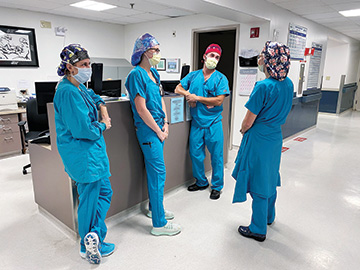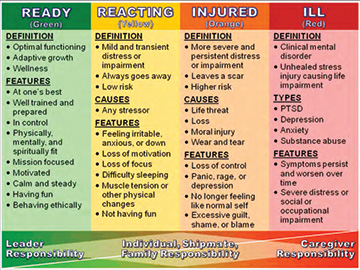Mindfulness has become a buzzword used to market a burgeoning wellness industry, but the practice is based on neuroscience and significant amounts of scientific research conducted over the past 25 years. “The research proves how these
practices actually create change in one’s brain, reduce stress, overwhelmed feelings and anger,” says Ms. Lodato. “It increases focus, a feeling of calm, happiness and resilience. Through mindfulness, we give ourselves a
choice about what’s going to happen next in our lives.”
Conversations, interactions and circumstances that we can’t predict or control can cause us to react in ways that create excessive frustration, says Ms. Lodato. “We judge ourselves and others, and feel overwhelmed when we’re
reactive,” she says. “That’s how our brain is wired.”
Perfectionism combined with intense pressure can cause individuals to question their behaviors or self-worth, which contributes to a lot of their stress and fatigue. It’s a vicious cycle.
By utilizing mindfulness and self-awareness, you learn how to pause by tuning into your own reactive patterns. You’re able to respond to events rather than react. “The pause is an intervention with one’s own reactivity, and lets
us choose an outcome that is most beneficial,” says Ms. Lodato.
She partnered with Michael L. Marin, MD, the Jacobson Professor of Surgery at the Icahn School of Medicine at Mount Sinai and surgeon-in-chief of the Mount Sinai Health System. Dr. Marin is a big proponent of mindfulness training and has been
proactive in improving the mental well-being of his staff with a comprehensive strategy. He brought Ms. Lodato onboard as a fulltime mindfulness trainer who could equip the staff with the tools they need to address internal struggles and prevent
burnout from occurring.
Ms. Lodato says the more providers use awareness tools, the more they rewire their neural pathways to become less encumbered by the situations they face each day. “The goal is to equip people with practices to avoid the patterns that bring
about burnout, and to restore balance in work and life,” she adds.
Mindfulness might feel like one more task to add to an already lengthy to-do list. Ms. Lodato has created bite-sized practices that can be done throughout the day — walking down the hall, at the scrub sink, during morning or evening commutes
— to serve as an entry point to mindfulness. As providers learn how to incorporate the practices into their daily routines, and begin to see the benefits, they will become more of a way of life.
“Mindfulness works, and the rewards are real,” says Ms. Lodato. “Our minds are often racing ahead to the future and relentlessly rehashing the past. The goal is to bring the mind and body to the same place at the same time, to
become self-aware and embodied. If you retrain your brain and increase self-awareness, you’ll gain vitality, energy and perspective. The payoffs far outweigh the demand of what’s required.”
She’s a former Silicon Valley executive and single working mother who didn’t have time to meditate for hours at a time. The mindfulness practices she shares with surgical professionals can be accomplished in 10 minutes each day.
“Although we cannot change what happens to us at any given time, we can choose how we want to respond or relate to what happens,” says Ms. Lodato. “The key to emotional, mental and physical freedom is in that choice.”
.svg?sfvrsn=be606e78_3)




.svg?sfvrsn=56b2f850_5)